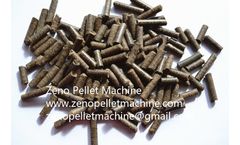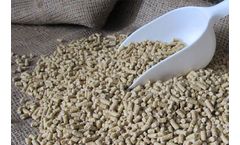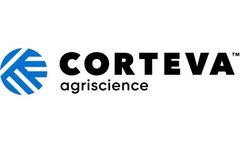Maize Harvester Articles & Analysis
20 articles found
I n July, 2012, Door County Cooperative, Sturgeon Bay, WI, needed to replace the 3,000 bph grain dryer at its Shirley Feed Mill at De Pere, WI. Dairy customers needed feed, and an above average corn harvest was ready to be harvested in ...
Through scientific and technological progress and innovation,a variety of usage have been found for the comprehensive development and utilization of crop straw on the world, especially in developed countries. In addition to the traditional crushing of straw and returning it to the field as organic fertilizer, there are also other usage like grass pellet maker machine, straw vaporization, straw ...
In a perfect world, every barn would be a new build where ventilation could be entered into the formula throughout the design, engineering, and building process. That fantasy, as you may have guessed, sure isn’t what we at VES work with on a day-in-day-out basis. The reality is that a large swath of the ventilation consultations and installations we do at VES are actually retrofits ...
Here are several animal feed ingredients as follow: Feed Pellet Making Machine To Make Corn(maize) Corn is the main raw material of animal feed, generally fit accounted for about 60% of the diet. ...
This season has been, without a doubt, one of the wettest since 2009. In many states, the excessive rain led to flooding and late planting. On my family farm in North Central Iowa, like on many farms throughout the Corn Belt, it was so wet that we couldn’t get into the field to plant on schedule. And the continued wet weather means that now high and variable grain moisture levels are ...
Maize harvest is particularly early this season. It also means early preparation to remove stalk stubble so insects like corn borers and leafrollers have no chance to leave everlasting damage to future crops. ...
Indigo announced yield forecasts in January for corn and soybeans across the Americas, democratizing data for the grower community to better navigate global markets during the U.S. government shutdown. With the shutdown, the doors of the United States Department of Agriculture (USDA) had closed. No work in that department meant that there was an indefinite hold on a key report, known as the World ...
Regardless of whether your yield data comes from your combine, grain cart, or from truck scales, each source has shortcomings that will not only influence your farm decisions but may also have a negative financial impact. This harvest growers will spend significant time and money chasing down accurate yield data from combine yield monitors, grain carts and/or truck scale tickets. Each of these ...
A corn combine harvester is a machine used for the corn harvest which both improves the harvest efficient and saves labor cost. Currently there are a variety of corn harvesters in the market, then how to choose a suitable corn combine harvester becomes an important question. In the following, we will give you some suggestions: 1. You should take the the regional applicability into ...
From initial results and observations it is apparent that the BioCat+ treated digestate has an improved symbiotic effect in the crop rhizosphere. Crops of wheat and maize recently harvested have shown increases in yields of up to 23% higher yields than previously achieved on the respective lands. In Austria we have already had the results of the wheat ...
The world produced 2,241 million tons of grain in 2012, down 75 million tons or 3 percent from the 2011 record harvest. The drop was largely because of droughts that devastated several major crops—namely corn in the United States (the world’s largest crop) and wheat in Russia, Kazakhstan, Ukraine, and Australia. Each of these countries also is an important exporter. Global grain ...
Corn stover, left in fields after corn grain harvest, has been identified as a potential feedstock to help supply biofuel needed to offset a portion of the 14 million barrels of oils consumed daily by the U.S. transportation sector. It was projected to supply 256 million tons of the 1.4 billion tons of biomass (232 million Mg out of 1.3 billion Mg) estimated to be available each year. Corn ...
Crop and livestock production are rarely integrated together in modern farming systems. Reintegrating crops with livestock production has been shown to produce many agronomic and environmental benefits. The objective of this study was to evaluate how an integrated crop–livestock system would influence weed biomass and weed species composition compared with a conventional, continuous corn (Zea ...
The recovery of fertilizer nitrogen (FN) applied to maize (Zea mays L.) by the succeeding wheat (Triticum aestivum L.) in a winter wheat–summer maize rotation in North China Plain (NCP) was studied in 2003–2004 and 2005–2006 by creating 15N-labeled soil columns. We found that the in-season maize plant use efficiency of FN was about 46 to 48% and ...
Escalating fossil fuel cost and concern over global climate change have accelerated interest in cellulosic feedstocks, such as corn (Zea mays L.) cobs, for liquid fuel production. Little information is available about this plant organ. We compiled and summarized available cob data from several recent field studies in the Central Great Plains. Data were collected from two locations in Colorado and ...
One relatively under-used manure management strategy employed by dairy farmers is to transport and apply manure onto the fields of nearby grain farmers. While this system offers advantages to both parties, little of the existing research on manure management has been conducted on grain farms. As part of an effort to link grain and livestock farms in southern Wisconsin, 20 on-farm trials were ...
Harvesting corn (Zea mays L.) residue in continuous corn (CC) may require changes in crop management for increased efficiency. Experiments were conducted in Illinois to determine how residue removal and tillage affect surface residue after planting and the response of CC to N fertilization. Partial removal of residue left 21 to 26% surface residue coverage with a chisel plow system, compared with ...
The emerging cellulosic-based ethanol industry will likely use corn (Zea mays L.) stover as a feedstock source. Growers wishing to maintain, or increase soil C levels for agronomic and environmental benefit will need to use C amendments such as manure, compost, or cover crops, to replace C removed with the corn stover. The objective of this research was to determine the effect of cover crops, ...
Hail damage can be a serious problem on corn (Zea mays L.) grown for silage. The value of corn grown for silage is a function of both the yield and quality of the forage produced. An improved understanding of the effects of defoliation on forage quality would improve the ability of agronomists, farmers, and crop insurance adjusters to assess the economic impact of hail damage to corn harvested ...
Abstract Nitrogen (N) export from soils to streams and groundwater under the intensifying cropping schemes of the Pampas is modest compared to intensively cultivated basins of Europe and North America; however, a slow N enrichment of water resources has been suggested. We (1) analyzed the fate of fertilizer N and (2) evaluated the contribution of fertilizer and soil organic matter (SOM) to N ...













